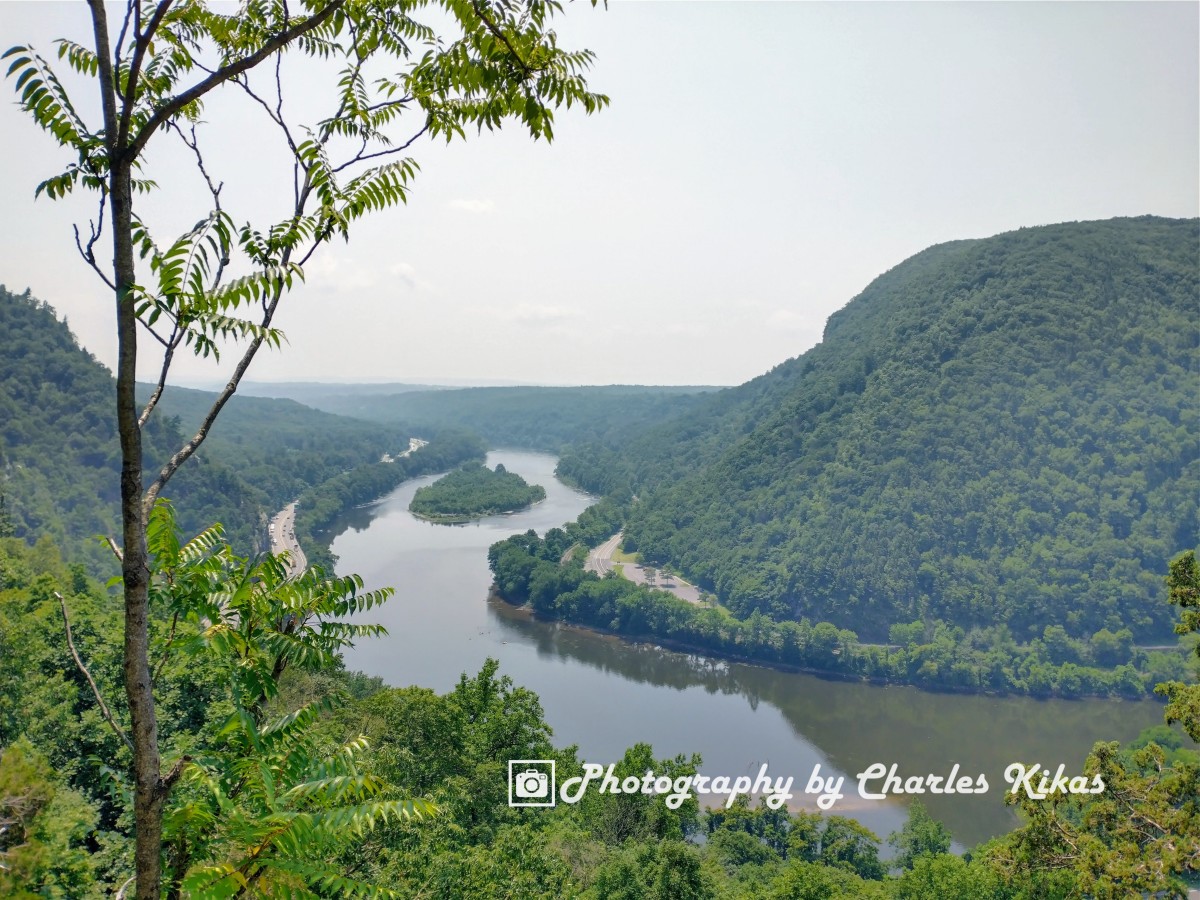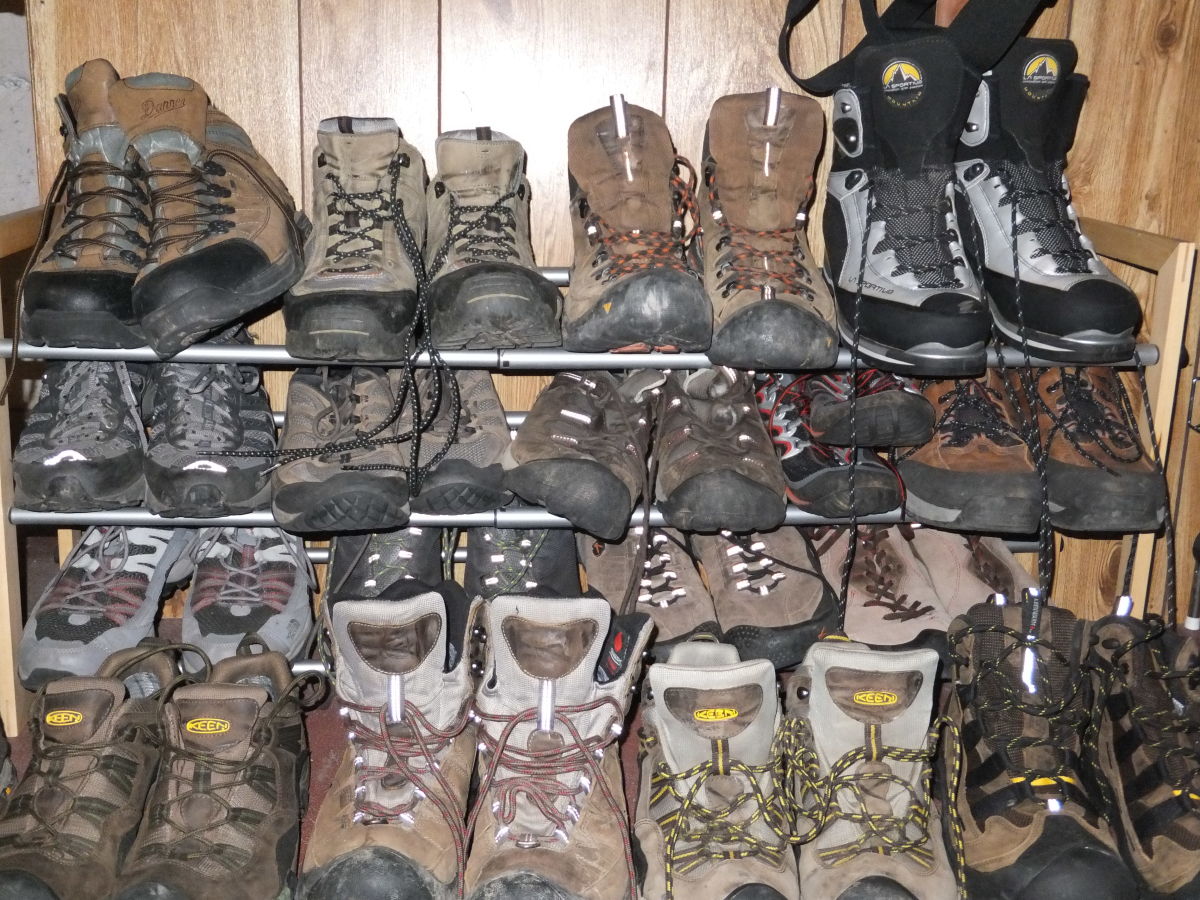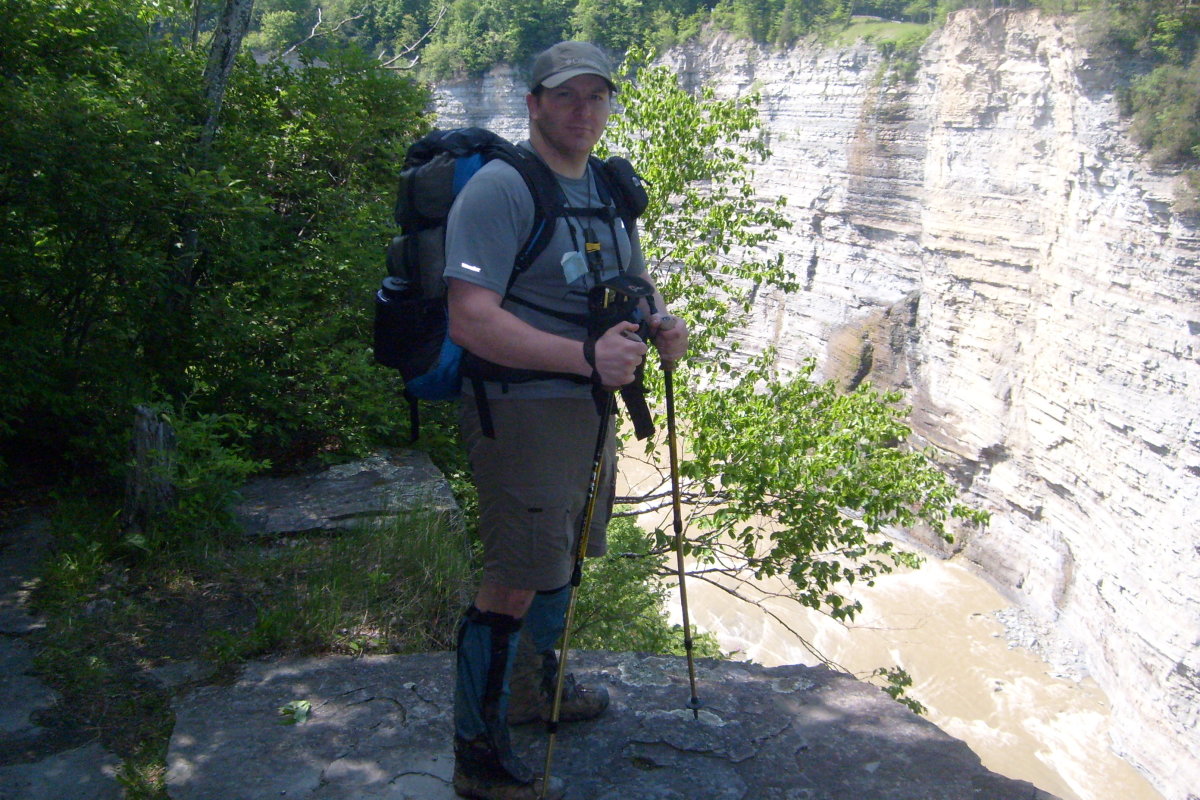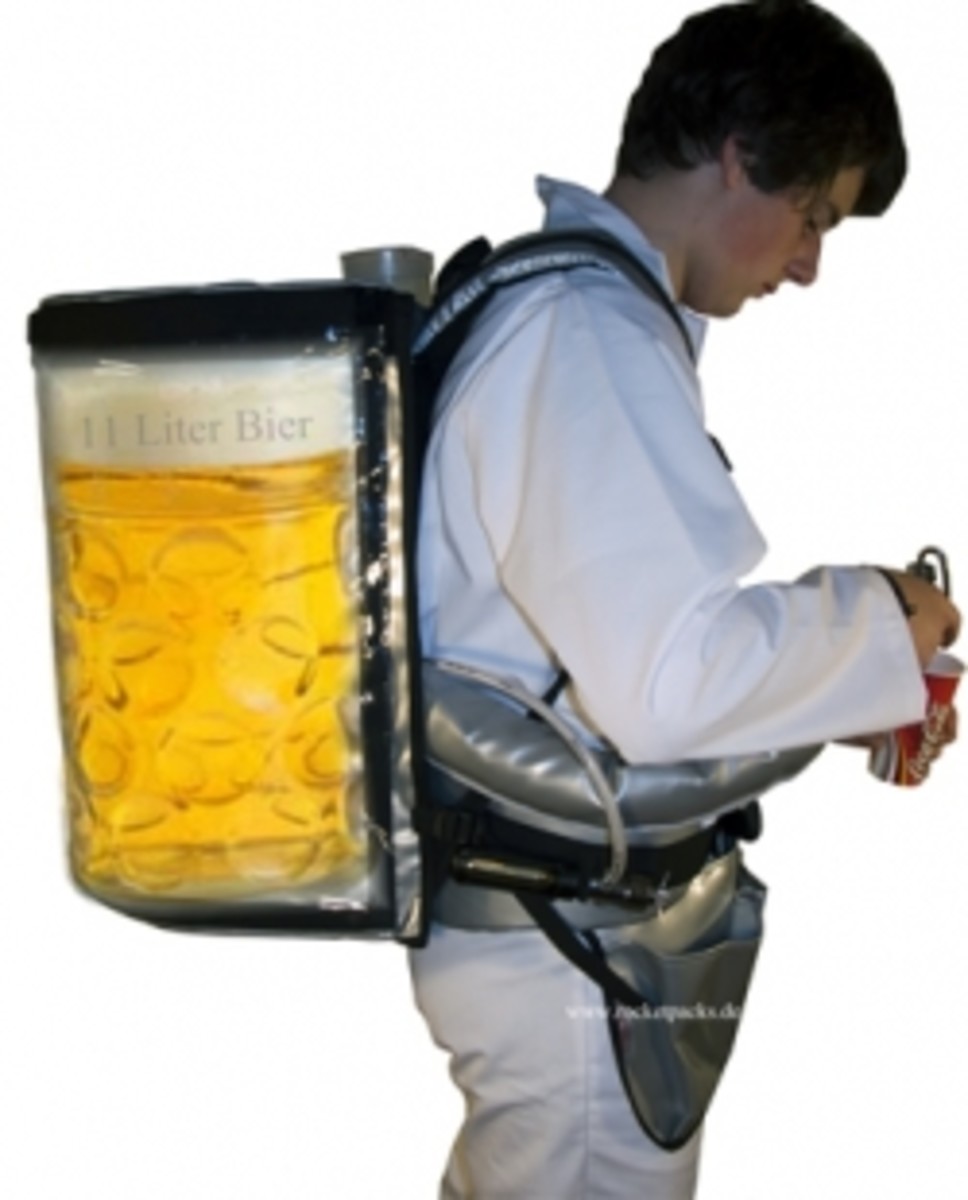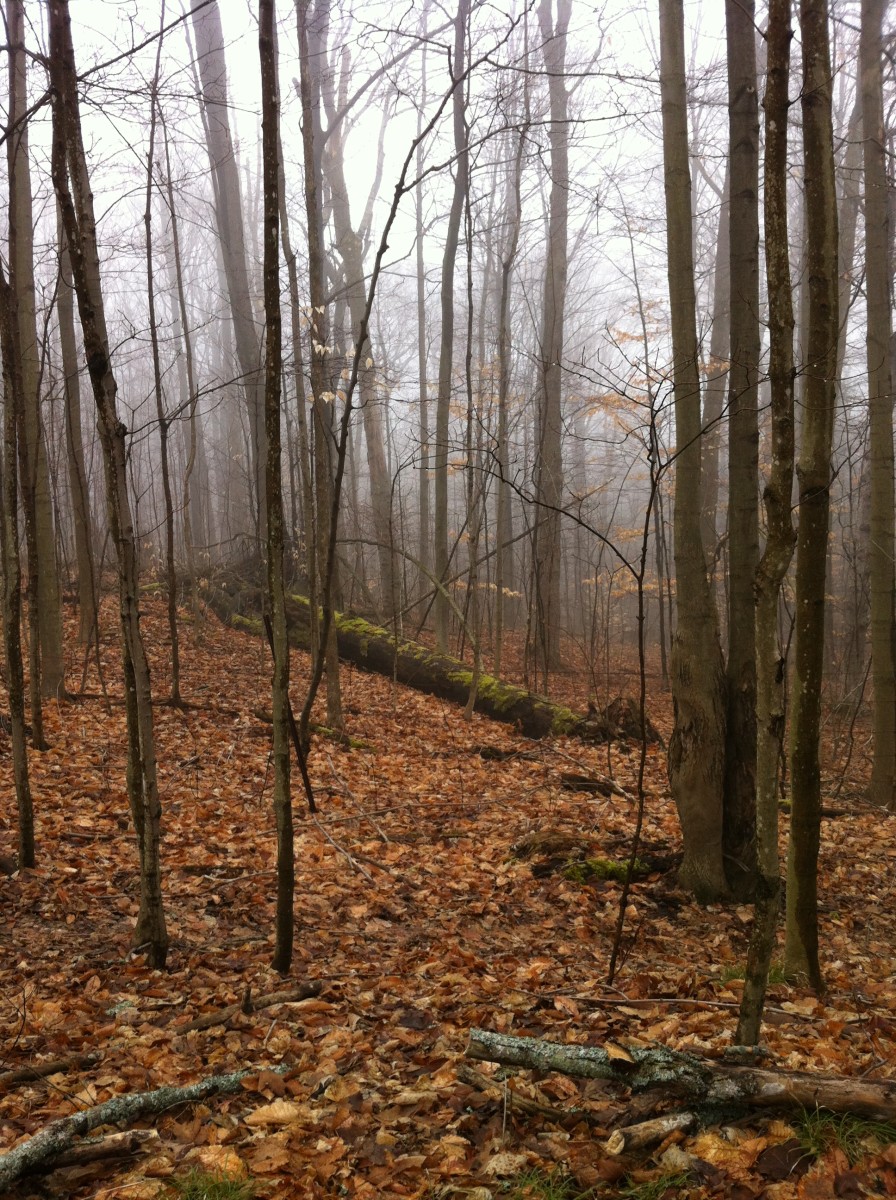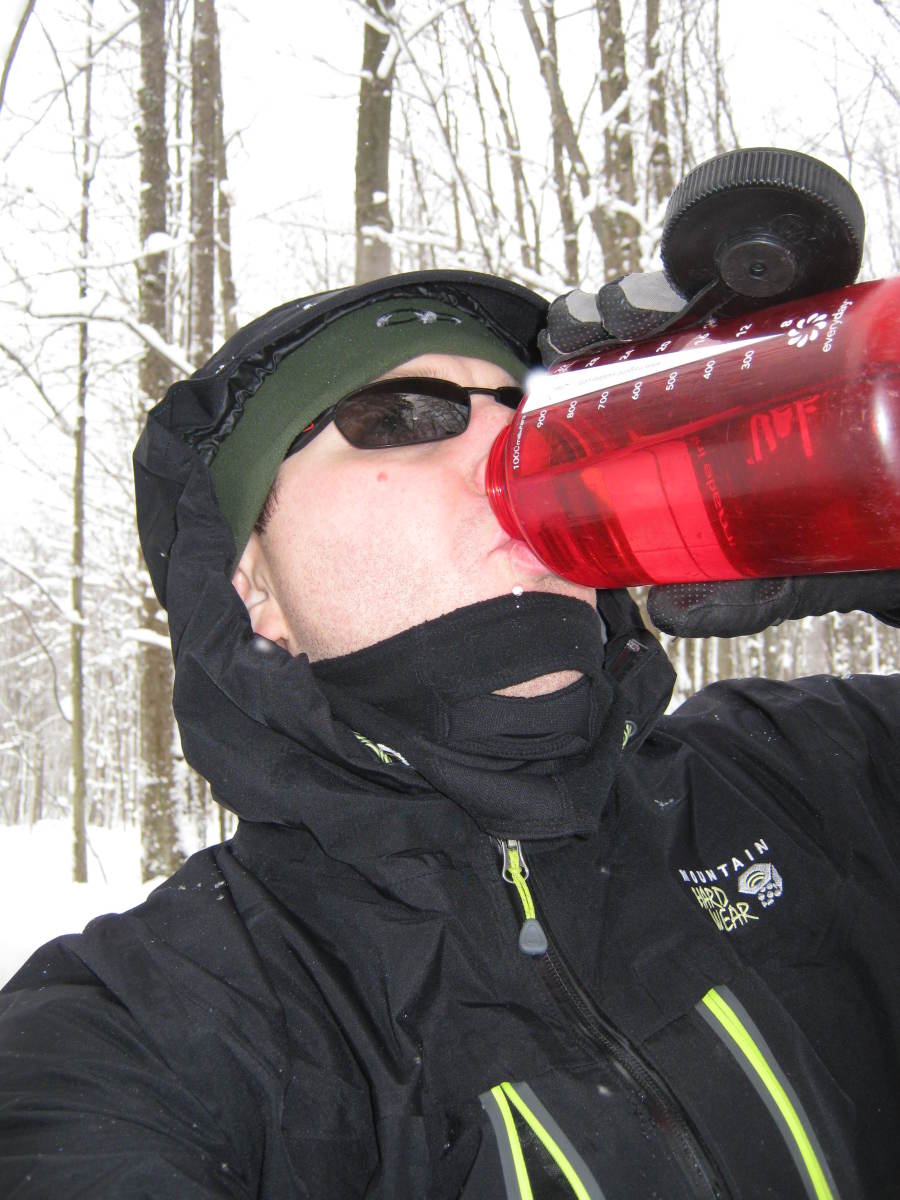How to maximize the enjoyment and benefits of hiking and backpacking

Start Simple
If you have little experience hiking (or have since "lost your legs",) remember to start simple in the quest to becoming a skilled backpacker. Rather than launching yourself into a multi-day backpacking adventure, begin with easy day-hikes that require little equipment or conditioning. The activity of hiking requires muscle groups which are not often used by people with a sedentary lifestyle. To avoid the risk of major injuries or perpetual discomfort while hiking, take the appropriate time to become (re)acquainted with the demands of hiking with weight.
Day Hikes
Day hikes are a great way to test your ability and desire to backpack without extensive commitment. Depending on the length of the day hike, relatively little gear and supplies will be required. However, day hikes can also provide an ideal testing ground for gear that will eventually be used on a more lengthy hike. Trails that are suitable for day hikes should be fairly short, well marked, and well maintained. Ideally an easy day hike involves short trails that loop back to their origin so as to avoid the need to cover the same ground twice. If a looped trail is unavailable, be sure to monitor the terrain and amount of time spent hiking out to allow adequate time for the return hike.
Proper Footwear
Having the right footwear for the hike is a critical step in ensuring maximum enjoyment. Medium or heavyweight boots that support the ankles are the safest bet whenever long distances and fully-loaded packs are involved, but they also have their drawbacks. Lightweight boots allow the feet to breathe more but they provide less support and are generally less durable. There are even sandals designed for hiking that work quite well, but the risk of injury is much higher without the protection and bracing that tightly laced boots provide.
The more expensive a pair of boots, the longer it is likely to retain form and comfort. This being said, $150 is a reasonable amount of money to pay for a pair of boots that last through a couple of years of abuse (shoe goop is great for extending the number of years). New boots that cost less than $50 are often poorly constructed; not ideal for a serious hiker, but good pairs of gently used boots are available on sites such as Ebay at a considerable discount. There are several quality brands in most outdoor stores and different hikers swear by different brands. Be sure to try on the shoes while carrying weight and find the brand which fits your feet best. With the right footwear you will be able to hike farther maximize the benefits of your outing.
Proper Socks
For maximum hiking enjoyment, having the proper socks is just as important as having the proper boots. Cotton socks should be avoided in most cases as they absorb sweat and do not offer much padding. Wool has historically been the material of choice due to its wicking properties, but there are many synthetic and synthetic-blend materials on the market that work as well or better than wool. For long backpacking trips, a pair of thin polypropylene liner socks should be worn underneath a thicker pair of wool or synthetic socks to help wick moisture away from the foot. Remember that the thicker outer socks will also serve as padding for the foot and can help prevent rubbing and blisters from developing. If hot spots from rubbing start to develop, immediately treat the afflicted area with moleskin or taped gauze padding to prevent blisters. Additionally, always have a pair of heavy socks that are only used for sleeping in and are therefore kept relatively clean and dry. How rewarding it is to slip into a pair of warm, dry socks at the end of a long day of hiking!
Use Layers
As far as clothing is concerned, the best way to remain comfortable during a backpacking adventure is to use several layers. Beginning with the undergarment layer, a tight-fitting and antimicrobial material such as UnderArmor is highly recommended. These can be used through several days of sweat without becoming too offensive or encouraging rashes. I prefer the type that covers the upper legs to help avoid chafing. However, like the sleeping socks, it is a good idea to have a pair of cotton underwear to wear while sleeping. This will allow the area to breathe without constriction, which is key in avoiding discomfort.
Next, a layer of thermal pants and a thermal shirt are wise in the evenings or as a base layer when weather is cold. However, if you become overheated while hiking be sure to shed these layers to regulate body temperature and avoid excessive sweating. I prefer to hike in nylon shorts and a t-shirt whenever possible as they are comfortable and allow for ventilation. However, it is a good idea to have a pair of rain pants, a light jacket or fleece, and a raincoat to protect from the elements and to add extra warmth. These layers can also be used while sleeping in lieu of a heavier sleeping bag.
Finally, a quality hat is critical as the majority of body heat is lost through the head. A tightly-knitted wool cap is generally going to offer the most warmth and it will work at retaining heat even when wet. When hiking in cold weather, briefly removing the cap offers an excellent method for regulating body temperature. Even in the summer, a wool cap is a great idea at the end of a long day of hiking and while sleeping.
Agua
What is your preferred method of water purification?
Go Light
When preparing for a lengthy backpacking trip, the less weight you are required to carry the more you will enjoy the walk. In some cases experiencing the burden of a heavy pack and suffering may be desired, but if enjoyment is the primary objective the best option is to go light. It is easy to over-prepare for a journey and later regret bringing supplies that were not used. Limit supplies to the bare minimum needed to survive and maintain comfort. Of the supplies that are used, try to limit excess weight whenever possible and purchase lightweight equipment.
A minimum (yet perfectly sufficient) list of items might include the following:
- Gear: Pack, cookware, shelter, sleeping bag, ground mat, poles, pack cover
- Food: Dehydrated foods rich in carbohydrates, calories, and protein
- Water Treatment: Chemical (iodine, chlorine), UV (SteriPen), filtering, boiling
- Safety: Pocketknife, headlamp, first-aid kit, map, cell phone
- Clothing: One set of layers, rainwear, sleepwear, hat, socks, and underwear
- Luxury: Essential toiletries, digital camera, small notebook
Minimalist backcountry packing list
Gear
| Food
| Water
| Shelter
| Safety
| Clothes
| Luxury
|
|---|---|---|---|---|---|---|
Backpack
| Dried Fruit
| Iodine
| Tent
| Knife
| Boots
| Soap
|
Sleeping Bag
| Trail Mix
| Chlorine
| Tarp & Cord
| Headlamp
| Socks
| Gold Bond
|
Ground Mat
| Oatmeal
| Ultraviolet
| Pack Cover
| Map
| Layers
| Toothbrush
|
Stove & Fuel
| Pasta
| Filtering
| Shelter Houses?
| Cell Phone
| Warm Hat
| Camera
|
Cookware
| Rice
| Boiling
| First Aid Kit
| Rain gear
| Notebook
| |
Water bottles
| Jerky
| Rope
| Sleepwear
| |||
Hiking poles
| Tuna
|
Some items could be considered optional while other items could be added, depending on the duration of the trip, anticipated weather conditions, and personal needs.
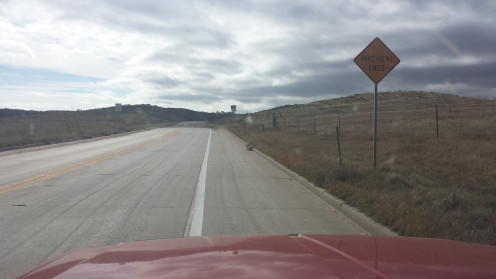
Avoid Crowds
The most profound backpacking experiences do not tend to occur in the midst of automobile tourists. It is the isolation that draws me to go backpacking time and time again. While many of the most beautiful spots are highly visited by tourists, there are just as many lesser-known spots that can have the same majesty and allure as the popular ones. Look for trails through State and National Forests rather than Parks to avoid entrance fees and crowds. Be aware of the peak tourist seasons and plan your trip to fall during the off-season. You may have to encounter more extreme weather conditions, but the peace and solitude gained are usually worth it. It can be enjoyable to hike alone or with a small group of people, but try to limit the size of the group to reduce the impact on campsites and avoid ruining the experience for other hikers. Another downside of crowded areas are that they tend to have more litter and evidence of human impact. Always carry out any trash produced while hiking, and help improve our planet by picking up the litter that less considerate hikers have left behind. The Leave No Trace concept is very important in order to reduce impact on the environment and leave the wilderness in a condition that can be enjoyed by others.
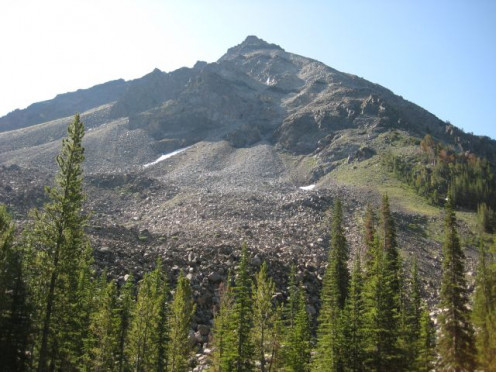
Use Poles
Although they can take awhile to master, I have seen very few serious backpackers that did not use hiking poles. The benefits that hiking with poles provides are numerous. To begin with, poles allow for the arms, shoulders, and chest to carry some of the load. This results in less fatigue in the knees and legs, a better full-body workout, and the ability to hike faster and farther. Poles help with stability and balance, they can be used to intimidate or fight-off threatening wildlife (bears, cougars, wolves, etc.), and they can be used as part of a minimalist shelter. When used correctly, even the cheapest of hiking poles should last several years...and in a pinch skiing poles or even a sturdy stick can be substituted for actual hiking poles. While the benefits of poles are most strongly felt when carrying a heavy pack, poles can be beneficial during day hikes as well. The extension of the arms as a secondary set of legs with poles invokes the most primal sensations of being a 4-legged creature roaming through the forest. While each hiker develops their own sense of locomotion using poles, I typically prefer placing a pole every 2 steps, so that the legs move twice as much as the arms. This leads to a gentle rolling movement that balances the burden to favor the legs but incorporates the upper body to absorb some of the impact.
Voice your opinion!
What is the season to hike during?
Have fun!
While experiencing the strain and exhilaration of backpacking, never forget that the main objective should be to have fun. Rather than worrying about hiking a certain distance or finishing as soon as possible, take time to absorb your surroundings and appreciate the escape from daily routines and responsibilities. Don't be afraid to rest frequently and diverge from the trail when the opportunity presents itself. Some of the most memorable experiences I've encountered while backpacking and camping in the backcountry have occurred when I focused less on the act of hiking and more on enjoying the serenity of nature. The journey is the destination!
© 2013 naturalist




